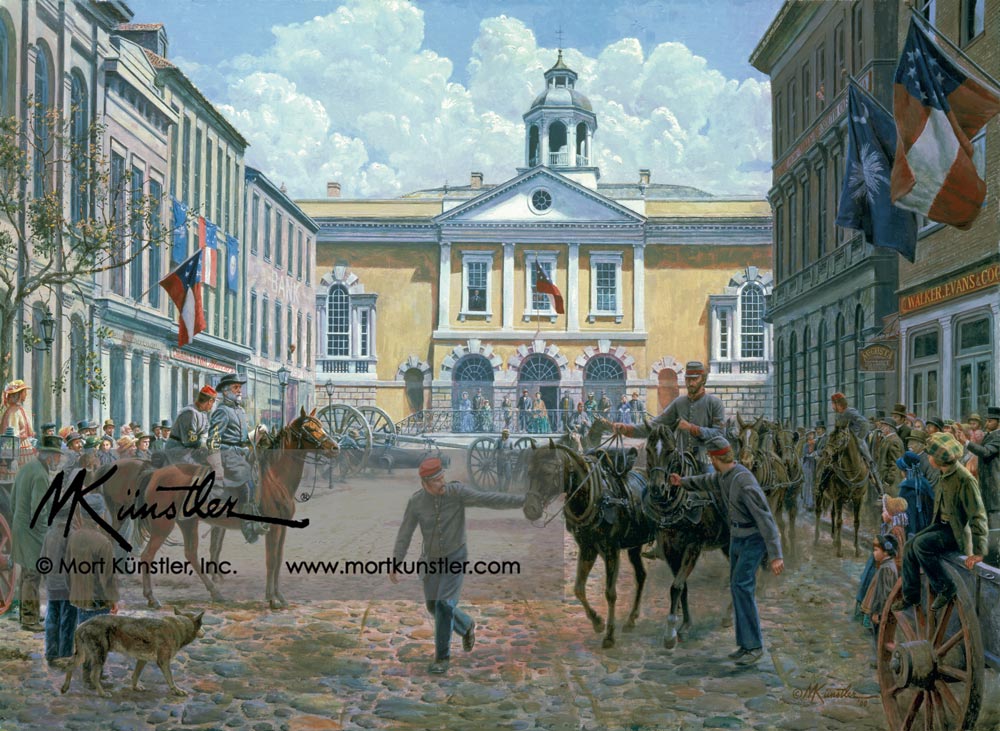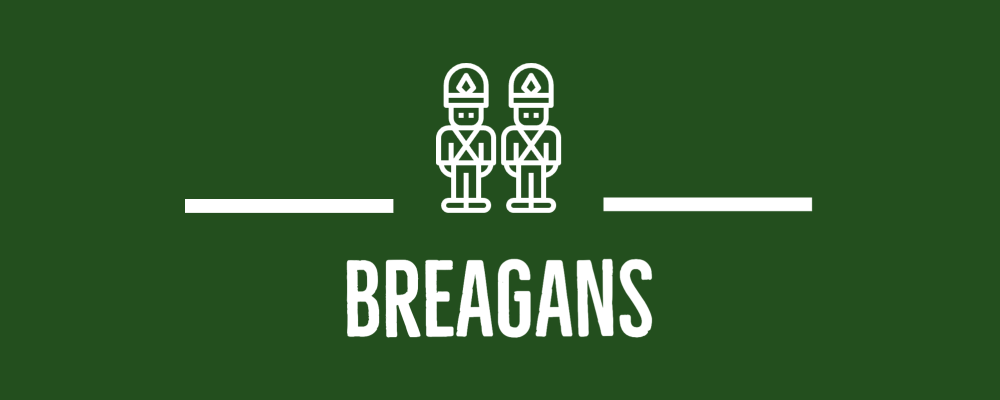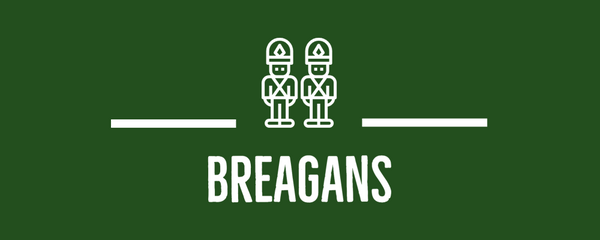Breagans
The Guns of Autumn
The Guns of Autumn
Couldn't load pickup availability
This is Mort Künstler limited edition print - The Guns of Autumn. Lee in Charleston, Dec. 15, 1861.
Reproduction technique: Fine offset lithography on neutral pH archival quality paper using the finest fade-resistant inks.
Each print is numbered and signed by the artist and accompanied by a Certificate of Authenticity.
Paper Signed and Numbered
Image Size: 17¾” x 24½” • Overall Size: 23½” x 29½”
Signed Artist’s Proof • Edition Size: 100
Historical Information
Throughout their new nation, Southerners prepared for serious warfare. Gone now were hopes for a quick and bloodless victory: More than 3500 Americans had been killed or wounded at First Manassas. Gone too were hopes of Southern invincibility: Federal forces had occupied Port Royal on the South Carolina coast and were threatening other coastal points. Northern invasion seemed imminent on several fronts - and Southerners now hurriedly strengthened the Confederacy’s defenses. In most places this autumn, the guns were silent as both Southern and Northern forces hastily mustered the resources for the firestorm to come.
In the autumn of 1861, General Robert E. Lee was dispatched to South Carolina to command the Department of South Carolina, Georgia and Florida. A gifted military engineer, he developed a defensive strategy, organized the region's resources, and directed placement of troops and artillery. Lee’s wisdom was especially welcome in Charleston – which state and local leaders knew was a major Federal target. His efforts would prove to be crucially important to the Southern coast: In most places Lee's line of defense would endure for most of the war.
Elsewhere on the borders of the Confederacy, Lee’s precautions were duplicated. Earthworks were erected. Artillery was put into position. Troops were deployed. Supplies and ammunition were storehoused. Even during its formation, the newborn nation was forced to defend itself. Soon, Lee would be recalled to Virginia, where gore and glory awaited him as commander of the Army of Northern Virginia. Throughout the South, meanwhile, the fledgling nation’s defenses would be put to the test. The guns of autumn would be silent no more.
Mort Künstler’s Comments
There are two areas of the Civil War that have been virtually ignored by artists. One is Robert E. Lee's assignment to the Carolinas to strengthen the coastal defenses; the other is the role of heavy artillery on the Southern coastline. I began to think what an incredibly difficult job it must have been to place these huge artillery pieces into position. What a great subject for a painting! I realized that I could combine these two important elements in one painting and give both the recognition they deserved.
The proper setting was, of course, the port city of Charleston, which is one of my favorite places. I was able to narrow down the location of what I wanted to paint to the view from Broad Street, looking east. This gave me the opportunity to look head on at what is now known as the Old Exchange, which was the Charleston Post Office during the Civil War. It is one of the most beautiful and best known buildings in Charleston and dates back to Colonial days. The Old Exchange has a fascinating history and is a major tourist attraction today. The cupola of the building has been changed three times and looks slightly different from its ante-bellum days. A restoration in 1981 to the rest of the building was based on original drawings and the Old Exchange appears today very much as it did during the war. Frances McCarthy, the director of the Old Exchange, was of enormous help in this part of the research.
I once again called on Charleston history expert Jack Thomson, who conducts a fascinating Civil War walking tour based at the Mills House Hotel. From Jack I learned that on the left or north side of the street on the corner was the Bank of South Carolina. Next to it was the office of the Charleston Mercury, whose publisher, Robert Barnwell Rhett, Jr., was one of the ardent secessionists of the day. The South Carolina state flag, the First National flag of the Confederacy, and the Virginia state flag (in honor of General Lee) hang outside the newspaper office, expressing patriotism for the new nation. These two buildings have been replaced, but the third building from the corner remains in such good condition today that you can still see the stone-carved lettering of the Charleston Insurance and Trust Co. The building closest to the viewer on the extreme left of the painting also exists, as do the three buildings on the right side of the street. The signs accurately indicate the businesses that were there during the war. This type of cobblestone street can still be seen in parts of Charleston, although it has been replaced on Broad Street.
For information about transporting heavy artillery I consulted Warren Ripley’s, Artillery and Ammunition of The Civil War. Talley Kirkland, a National Park Service historian at Fort Pulaski National Monument, provided expert advice on a variety of important points. In the painting, we see an 8-inch seacoast Columbiad being transported on a specially designed cart. The cart had enormous wheels and was hitched to a caisson pulled by a team of twelve horses and mules. The details of the hitch and the operation of such a difficult maneuver were checked by Colonel David Stanley, who is an artillery expert.
The war’s opening days are so interesting to paint. The uniforms were bright and colorful, and the civilians were cheerful and optimistic. Sunshine, blue skies and puffy white clouds reflect this mood, which would soon give way to the realities of war - tattered uniforms, hunger, gloom and hardship.
Share


Continue Shopping
See more of the Breagans' collection of manufacturers from all around the world
Subscribe to our emails
Subscribe to our mailing list for insider news, product launches, and more.

